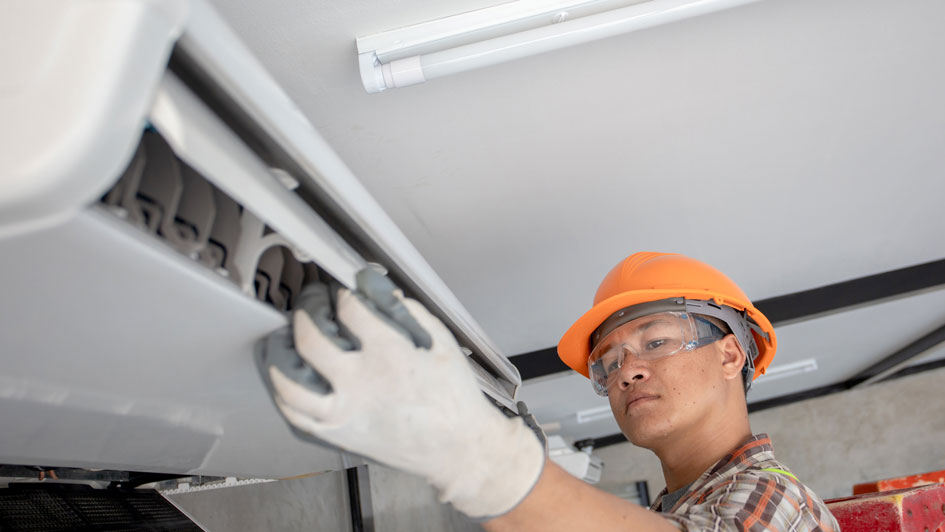
When looking for a heating and cooling system for your home, it’s essential to choose one that balances efficiency, operation and the impact on your wallet. That’s why many families explore the possibility of mini-splits to heat and cool their home.
Mini-splits—often called ductless mini-splits—provide many advantages that make them an appealing solution for both homes and businesses. They're extremely energy efficient, reducing energy consumption and saving on utility expenses, because they eliminate the energy losses associated with the ductwork found in traditional HVAC systems. They also permit users to control the temperature in each room, enhancing overall comfort while conserving energy.
If you’re considering mini-split installation in Plover, it’s important to first determine if these devices are the right solution for your living situation. Here, we’ll examine how mini-splits compare to other heating and cooling devices and appliances.
What a Mini-Split Is and How It Works
A mini-split, or ductless mini-split, is a heating and cooling system that has no ductwork. It's often used in homes that don't have existing air ducts and for homes with rooms that aren’t served well by the home's existing HVAC system.
A mini-split system has two main components: an outdoor compressor/condenser and an indoor air-handling component. These are attached by a conduit containing the power cable, refrigerant tubing, suction tubing and a condensate drain.
Here's how it works: the outdoor compressor circulates the refrigerant necessary for heat exchange throughout the coils and the air handler. The interior device pulls in air from the room, cools or heats it over the coils and forces the conditioned air back into the room.
Mini-Split vs. Central Air
Mini-splits are good for targeted cooling in specific rooms or zones of your household. They are known for energy efficiency because they only condition the areas you desire. However, they might not blend seamlessly into every decor due to the fact they have wall-mounted indoor units.
On the other hand, a central air system uniformly chills your entire home, keeping consistent comfort levels throughout. Its ductwork is out of sight, preserving the interior design of your home. But it may not be as energy efficient as a mini-split, especially in larger homes or residences where certain spots may not need nonstop conditioning.
Mini-Split vs. Window AC/Window Unit
Mini-splits are usually more energy efficient and not as loud as a window air conditioning unit and are useful for cooling air in multiple rooms. This is why mini-splits are a versatile option for countless homeowners. They also operate using a type of refrigerant that is more eco-friendly, decreasing their environmental impact. These units can even add value to your home due to their durable nature and superior cooling capabilities. However, they come with a higher initial investment.
On the other hand, window air conditioning units are less expensive initially. They may be a good fit for homes that are not able to accommodate a central AC system or for homeowners with budget constraints. In spite of these advantages, window units can use up to 40% more energy than ductless mini-split systems and often are louder.
Mini-Split vs. Portable AC
The answer to what is better, a ductless mini-split or a portable air conditioning unit, will depend on on your priorities. If your main focus is energy efficiency and performance, a mini-split is much more effective than a portable AC unit. However, if finances is a major concern, a portable AC costs less.
Mini-Split vs. Gas Furnace
Choosing between a mini-split system and a gas furnace depends on an assortment of factors such as the climate in your city, home size, energy efficiency preferences and spending plan.
A mini-split system usually is more energy efficient than a gas furnace. It can heat and cool targeted areas inside of your home, delivering custom climate control in targeted rooms. Mini-splits also are generally quieter and have a greater up-front cost, but their operating costs are usually less due to their improved energy efficiency.
Alternatively, a gas furnace can be a very effective heating solution, particularly in colder climates where mini-split heat pumps may fail to maintain comfort levels in the bitter cold. While they are less energy efficient than mini-splits, gas furnaces typically are not as expensive. Having said that, their operating costs can be greater, especially if natural gas prices skyrocket.
Mini-Split vs. Heat Pump
Mini-splits and heat pumps function with the process of heat transfer. They are both energy efficient, but a heat pump's air ducts can use more power. That said, the choice between a mini-split and a heat pump often is based on on a family's needs and circumstances.
By way of example, if you reside in a warmer climate and primarily need cooling, a mini-split system might be a good choice. But then again, if you want both heating and cooling and already have ductwork installed in your residence, a heat pump might be a more efficient option.
Mini-Split vs. Space Heater
In regards to heating and cooling a household, mini-splits and space heaters each have advantages. However, for total efficiency, versatility, comfort and safety, mini-splits stand out. Mini-splits provide superior energy efficiency simply because they deliver conditioned air straight to different zones and can serve numerous rooms at once.
Space heaters are much less expensive to buy but are typically recommended for heating a limited area or an individual room. They also can be less energy efficient. In contrast to mini-splits, space heaters do not deliver cooling. The greatest drawback for space heaters is the chance of fire. Industry experts say some 1,700 fires annually involve space heaters.
